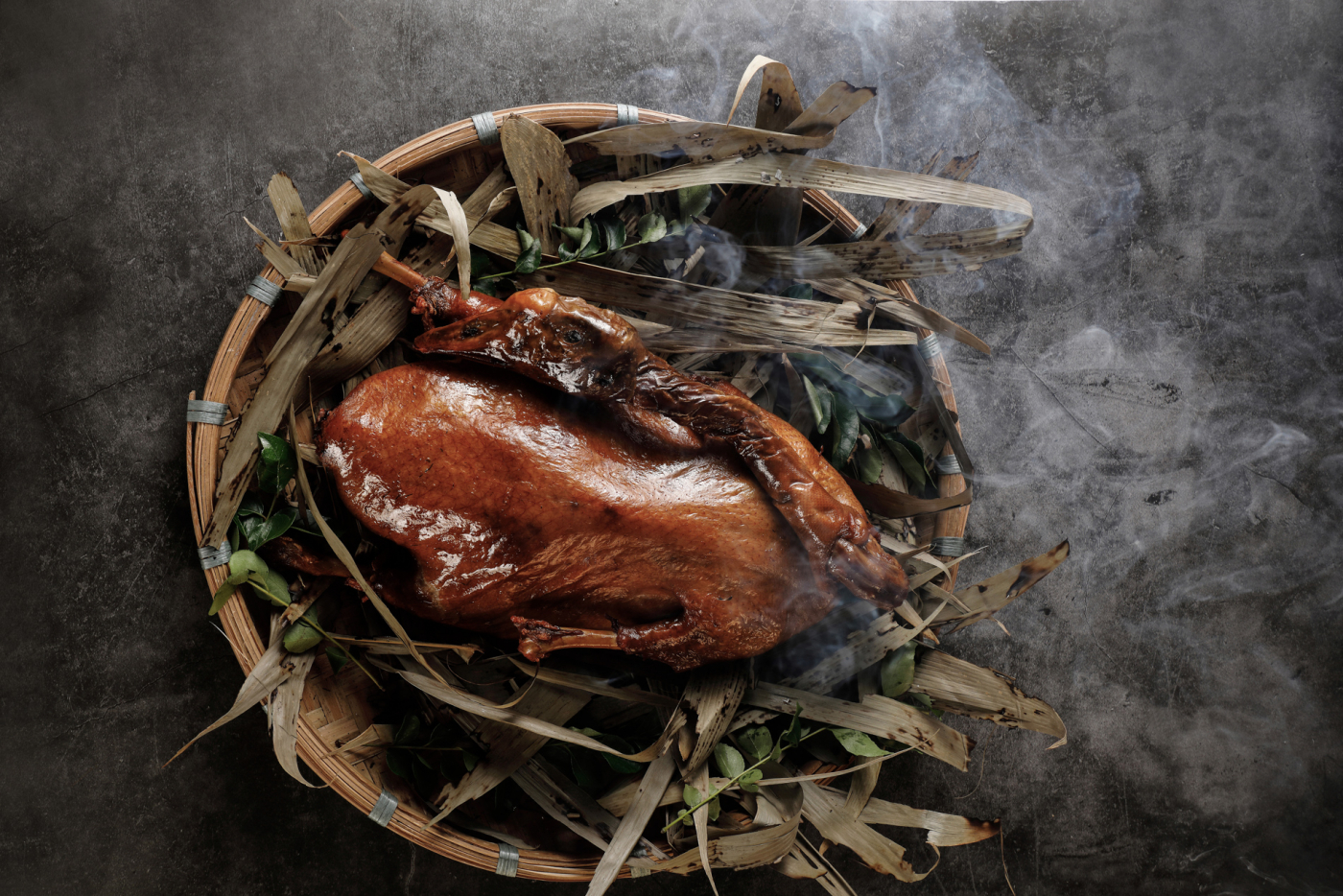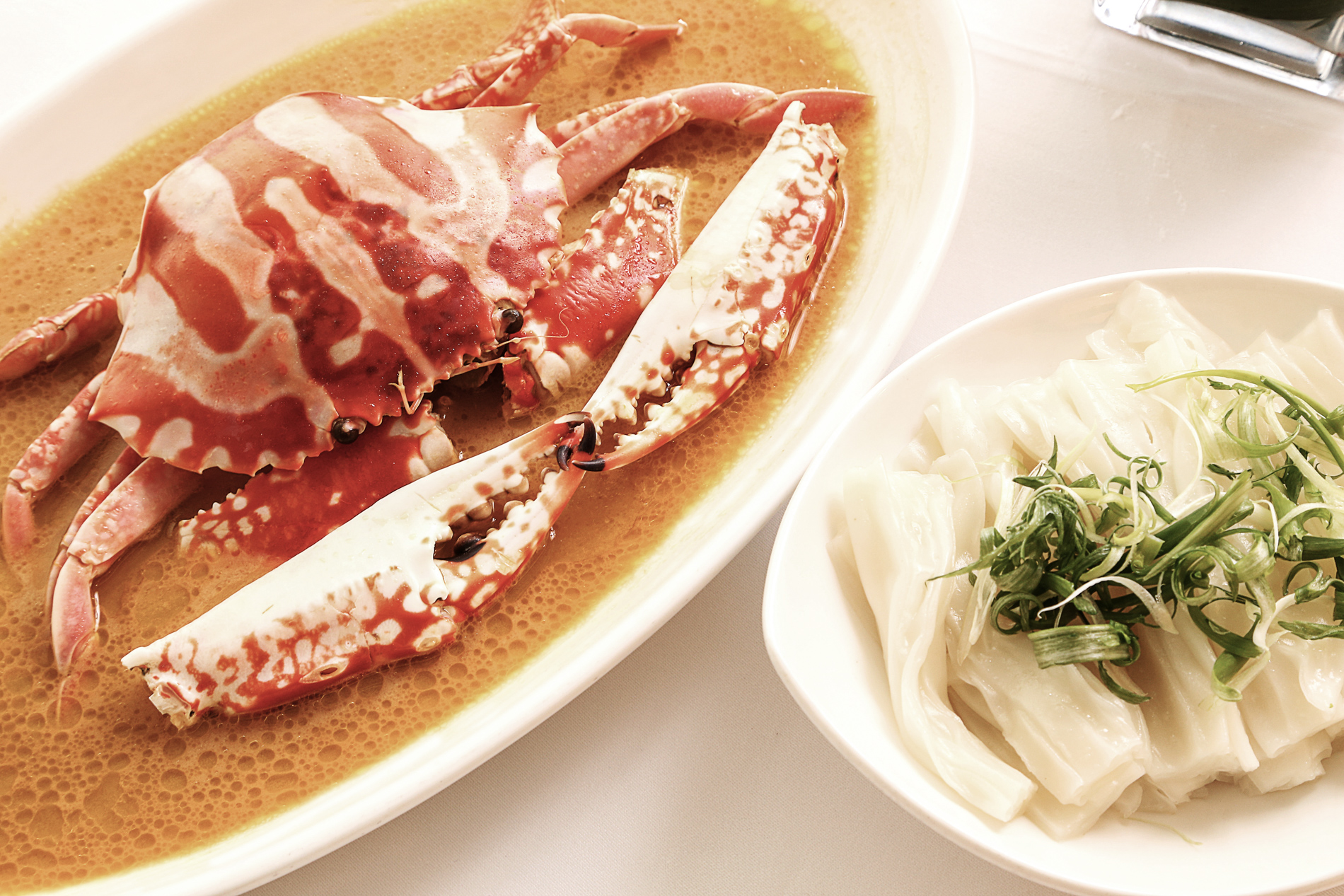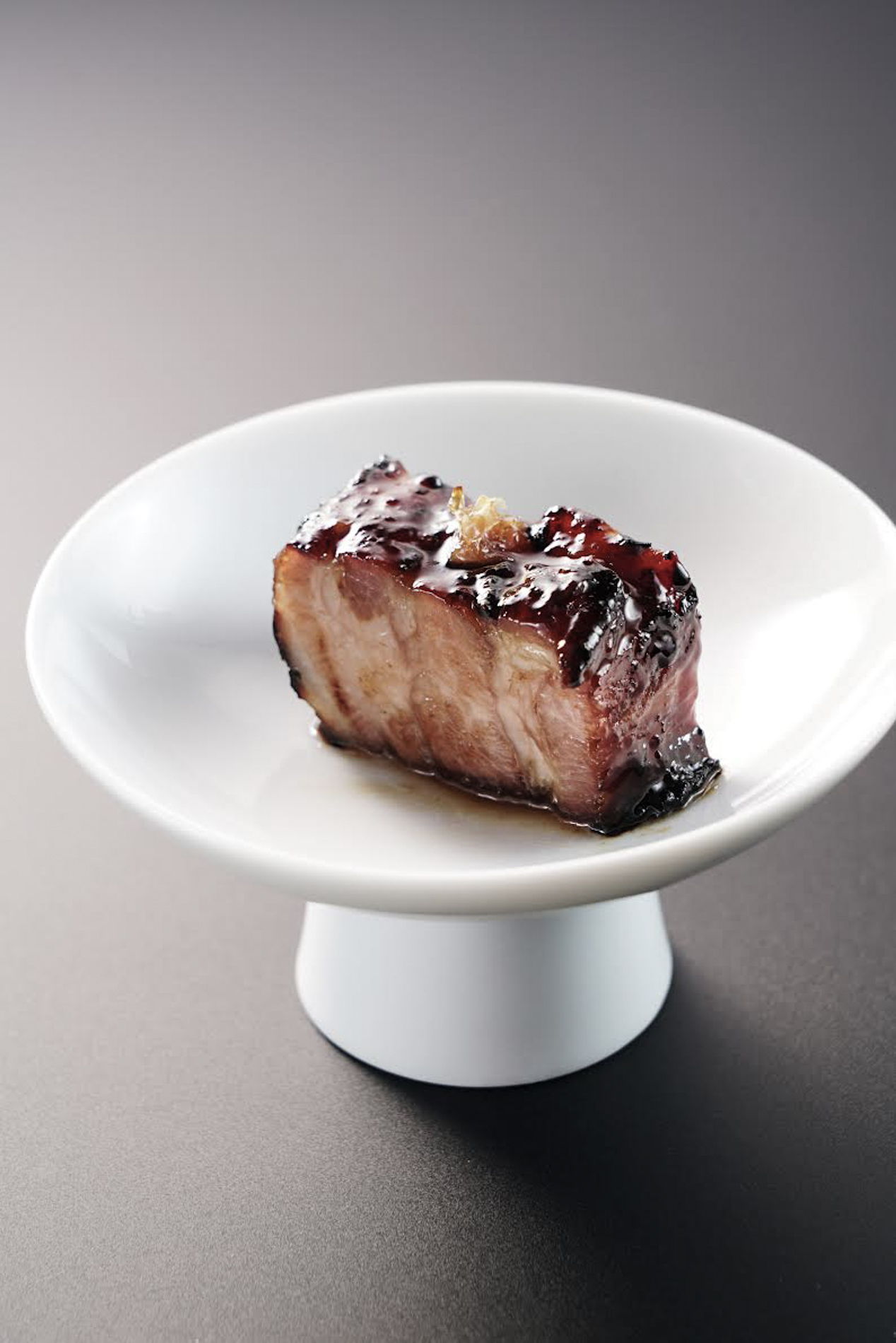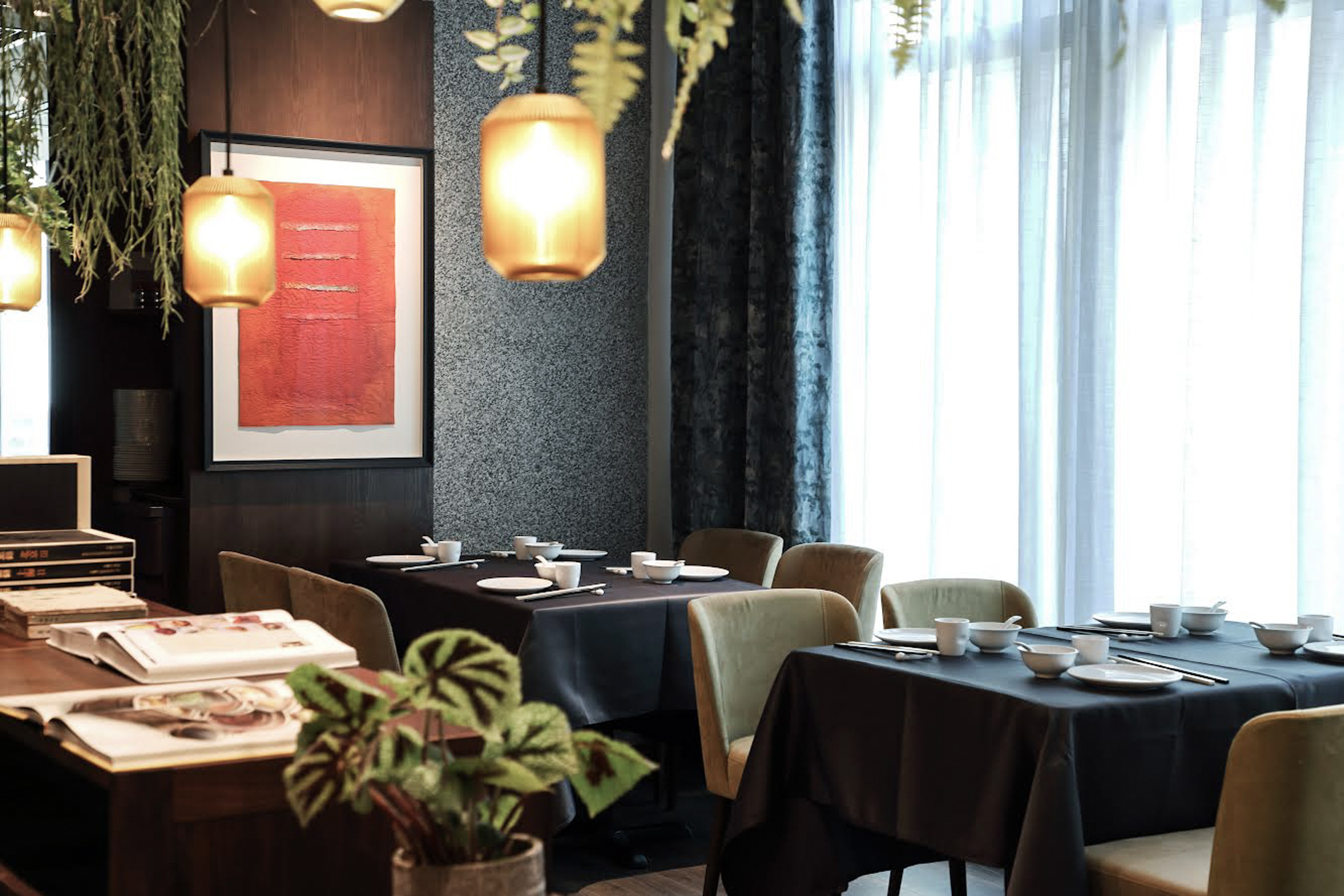
Head of the table | The Chairman, Hong Kong
David J Constable knows his way around a Chinese menu. He grew up on this stuff (just worse)

David J Constable knows his way around a Chinese menu. He grew up on this stuff (just worse)

Throughout life, you form a mindful collection of yet-to-dos. This internal catalogue of wants increases over time, from the movies we know but have yet to watch, and the cities we are yet to visit, to that long-time fancy whom you tell yourself that you’ll one day ask out but haven’t yet built up the guts to do so. All contribute to a back-of-the-brain list of yet-to-dos.
In restaurant terms, there’s El Bulli. However, since Ferran announced its closure in 2011, that particular dream has gone up in smoke. Also, Fäviken from Nordic chef Magnus Nilsson, but that too closed in 2019. And The French Laundry and The Fat Duck, both of which are still operational, but diminishing brands where a meal at either could never compare to when the kitchens were at their zenith. And The Chairman in Hong Kong. I had an opportunity to visit the restaurant in 2012 at the invitation of the late Sir David Tang. He’d bent my ear on its legacy and impact on the epicurean traveller, of whom he was one of the greats; an unabashed bon viveur and sniffer-outer of brilliantly worthy grub.
It’s why you still see chips with curry sauce on menus; itself a product of Indian immigration
Sadly, I could not accept Sir Dave’s invitation due to such a short time frame in Hong Kong, passing through on my way to Thailand. I learnt later that he took AA Gill. I like to think that it was a consequence of my absence, although I’m sure Adrian was going all along and I was a mere afterthought, the last-minute substitute bottom. Whatever the actuality, The Chairman had long eluded me, rooted in my internal collection of restaurant yet-to-dos.
Actually, I was brought up with a lot of Chinese food. Well, the UK high-street version. French and Italian restaurants existed, but never really as a takeout option. And no one was asking for Moroccan or Greek on a Saturday night. Chinese food in Britain was the first popular takeout. Although, these were mostly Cantonese dishes adapted to British tastes, a sort of Chinese-ish and cross-cultural melange. It’s why you still see chips with curry sauce on menus; itself a product of Indian immigration. Everything else on these voluminous menus was adequate, although hardly a culinary exploration into the regional diversity and enormity of food from the East.
The first Chinatown in London was actually in Limehouse until it was destroyed during the Second World War
The first Chinese eating houses in Britain were aimed at Chinese sailors who settled around the docks in London’s Limehouse, Liverpool and other cities in the 19th century. The first Chinatown in London was actually in Limehouse until it was destroyed during the Second World War. According to Fuchsia Dunlop, it wasn’t until Chinese restaurants started opening in central London that they won the affection of customers who were not Chinese. As she says, “It was altered plates of servicemen from Asia after the Second World War that helped to shift attitudes.” From then on, we Brits never looked back, and Chinese restaurants dominated the high-streets for years to come.
Growing up in the English southeast, takeout options were, and mostly remain, chow mein or pizza. Back then, the idea of a Chinese takeaway was rare and celebratory, and only on a family member’s birthday. And it was always the same order. To a large extent, it still is – beef chow mein, prawn toast, pork balls, sweet and sour chicken, beef with green peppers and black bean sauce, egg foo yung and that rectangle slice of fried rice tipped from a plastic tub. If it was a significant birthday, shredded duck and pancakes, too. Yeah, I know my way around a Chinese menu alright. My Mi Xian from my Fen Si and the difference between Chop Suey and Jung Po.

Steamed fresh flowery crab with aged Shaoxing wine and fragrant chicken oil
More recently, I was put to the test as part of a Hong Kong Tourism Board jolly when I attended a welcoming lunch at… you guessed it, and plucked straight from my back-of-the-brain list of yet-to-dos, The Chairman. The restaurant’s current location is less than a year old, having moved from Kau U Fong West to the third floor of The Wellington Building in the city’s Sheung Wan district. And, like Kung Fu Panda breaking a fast, my belly thundered in anticipation of food.
Seated at a huge round table with chefs and press from across Asia, plates steadily built up. Starters were plentiful, both hot and cold dishes. Lily bulb and winter melon marinated in ginger vinegar and rose wine set things off but had a strong aroma of perfumed rose, and was too overpowering for me. It was like when you open a box of Turkish delight for the first time or catch a whiff of that floral air freshener in your grandmother’s knicker draw. Thick-cut Chairman-style char siu with grilled aged eel and bean paste upped the ante, the fermented paste adding a salty slap around the chops. And crispy pigtails with hawthorn sauce were excellent; the cartilage gritty, the fat salty and with a jiggly-rim of wobbly gelatine. It was a dish about texture. Taste too, but they are equally important to each other here.

Thick cut Chairman-style chair siu
A tentacle-sprawling cold soy-marinated baby squid was flavoured with Sichuan pepper oil and stuffed with dried squid. It is a brilliant example of the complexities and versatility of the jelly-bodied mollusc, an ingredient that is all about texture. A lot of what followed was about texture, the pappy, flabby structure and a consistency popular in these parts, known as “kou gan” or ‘mouthfeel’ in China. It was a dish that I still think about, and it reminded me of something I had in Valencia a few weeks earlier; the squid stuffed with pearl rice and doused in a green oily sauce, with a sprinkle of Pimentón de La Vera. Here, the soy and spices had seeped somehow into the rubbery tissue, that firm texture with all the mouth tingingling razzmatazz oozing when punctured.
The first arrival of boozy lubrication was a seven-year-old homemade plum wine with hawthorn and soda, a bubbly beginning that excited and refreshed. Then a wine from Valais in southern Switzerland and a bottle of Marie-Thérèse Chappaz Grain 2022, of which there are only 12,000 bottles produced a year, 24 of which are reserved for The Chairman. However, it wasn’t to my taste, unlike the glass of Ulysse Collin rosé champagne, which was followed by a lively pinot noir from the Eyrie Vineyards in Dundee Hills, Oregon.

The Chairman, Hong Kong
There were other mains, fish and crustacean courses of steamed crab with aged Shaoxing wine and “Three Blades” red grouper. These are some of the best bits, thanks to the restaurant’s commitment to local purchasing and are the real point of coming here. And chicken oil and flat rice noodles; abalone soup; steamed fish jaw with 30-year-aged salt-preserved lemon; sugar snap peas stir-fried with fresh water baby crab roe, and on and on. Trays of tanned featherless geese, some whole and intact, others separated limb from limb; paired with a glass of 2015 Domaine de la Touraize Arbois, from Savagnin grapes in France’s mountainous Jura region. And bubbling vats of soups, clay pots and rice broths. Sauces and oils of shrimp, lemongrass, chicken, green onion and fiery spices, with stinky tofu from the legendary producer Miss Lee. Okay, and… breathe. The table consumed; a spinning assembly of the weird and the wonderful, and without a chip or curry sauce in sight.
The restaurant also has a small farm in Sheung Shui in the north of Hong Kong, where they cure preserved meats and produce pickles. The Chairman’s founder Danny Yipp is at odds to tell me that there are no shark’s fin, sea cucumber or bird’s best on the menu because they consider other delicacies “more interesting and eco-friendly”. A guileful stab at other kitchens in Hong Kong, perhaps. He also divulges that such is the quality of the stinky tofu, that on the day of Miss Lee’s retirement (she is currently 70 years old), the restaurant will also retire the product from its menu, unable to source an equal.

Steamed crab meat and Sakura shrimp sticky rice
This is a lot for a kitchen to deal with, and some dishes stand out more than others, but the quality of the ingredients is unassailable; the cautious preparation and delivery clear. While there’s nothing revolutionary in proclaiming your kitchen’s reliance on fresh, seasonal ingredients, Danny insists on sending his team to the Aberdeen Fish Market in the morning, just as the boats hit the shore. The rewards are evident and the effect is a brilliantly polychromatic spread of spinning bowls and plates, offered with brimming nationalistic pride. Danny fills in the blanks, “Our cooking is fundamentally built on tradition… it’s about freshness and simplicity. That’s why we’re at the markets every morning.”
I have been thinking about what makes The Chairman so special, the sourcing and brightness of their ingredients aside. Those things which caused Sir Dave to declare it the best in business. To reduce it down to just the cooking and the ingredients feels reductive. Places are institutions for a reason, and The Chairman’s place in Hong Kong’s culinary rolodex is undeniable. So here is my summary: a long-standing characteristically Chinese restaurant which has never faltered from its responsibility and patronage to local markets, producing recipes traditionally Chinese leaning, but unequivocally modern and avant-garde; an authentic litany of dishes that celebrate heritage cooking without ruining or feeling the pressures to redesign for a modern audience.
Who gives a fishy f*ck? Rather, it is about getting that pigtail and that webbed goose foot into the paying punter’s mouth quickly and professionally
The Chairman’s strength is cooking without fanfare, and with attention geared towards the product. I am seeing this disappearing more and more from global contemporary kitchens, replaced instead with a boastful trumpet call and ego of the chef. On the pass here is Kwok Keung Tung, who has been part of the restaurant team since its opening in 2009. And he is kitchen-bound, because he is the chef, and at no stage is visible or paraded through the restaurant to explain a concept or recipe inception. There’s no need for an elongated story of childhood nostalgia or an explanation of a pompous foamed dish because the chef once enjoyed a bubble bath in Spain. Who gives a fishy f*ck? Rather, it is about getting that pigtail and that webbed goose foot into the paying punter’s mouth quickly and professionally, and then, before they have time to think, hitting them with another dish followed by another.
So now that I’ve marked off The Chairman, I must replace its once-occupied space in my list of restaurant yet-to-dos with another. I wish Sir Dave were still here to read or listen to my conclusion, a decade and change after his invitation. I think he’d smile. And Adrian, too, who would almost certainly cast judgement and insert his perceptual prognosis – on lunch and my prose. You finally visit a restaurant that you’ve held dear for years, living up to the hype and consociate jabber, putting pen to paper and tossing it out into the world, and there are few people for whom you regard enough to probe and scrutinise it with. Crudely put, they all buggered off and died. So, is there anyone (alive) who wants to take me to Plénitude or Atomix next? C
The Chairman, 3rd Floor, The Wellington, 198 Wellington St, Central, Hong Kong
thechairmangroup.com